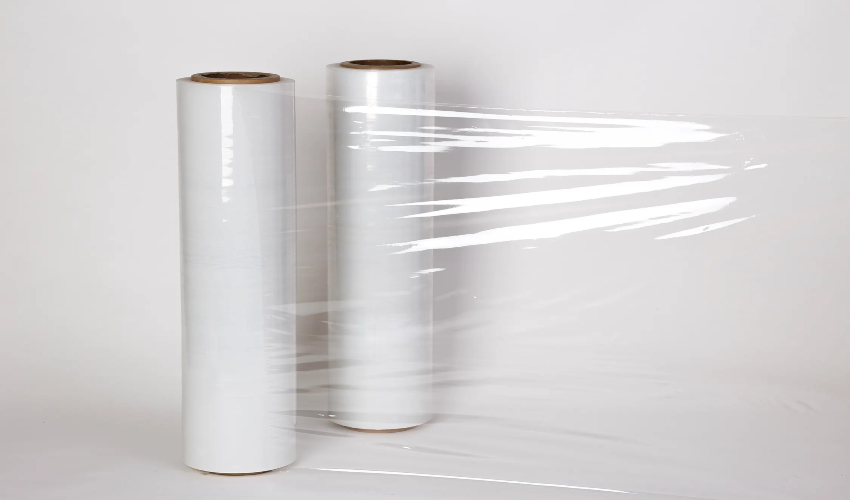
Moving plastic wrap is a versatile tool designed to protect and secure belongings during a move. This thin, stretchy film clings to itself without using adhesive, making it ideal for bundling and wrapping items without leaving any residue. Moving plastic wrap can be used to secure drawers, keep doors on cabinets closed, and protect surfaces from dirt, dust, and minor scratches. If you’re wondering where to buy furniture wrap, it’s available at most moving supply stores, online retailers, and home improvement shops. It is particularly useful for safeguarding furniture, appliances, and other bulky items, and ensures that all belongings arrive intact, making it an essential tool for any relocation. Moving plastic wrap, like 30′ x 1,000′ stretch wrap, is ideal for securely wrapping furniture, cabinets, and dressers during moves or storage.
Why Choose Our Stretch Film Over Competitors?
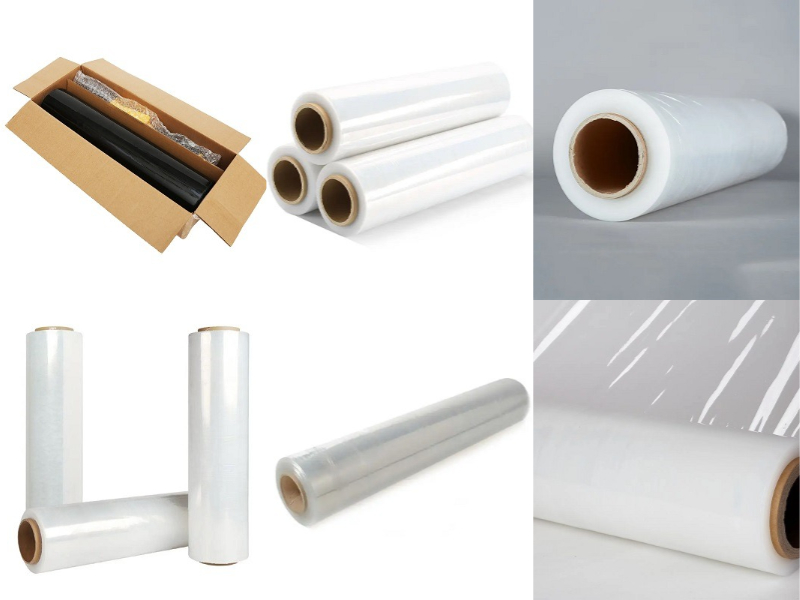
| Attributes | Details |
|---|---|
| Place of Origin | Fujian, China |
| Brand Name | PWP Stretch Film |
| Material | Linear Low Density Polyethylene |
| Type | Stretch Film |
| Length | Customized |
| Width | Customized |
| Thickness | Customized |
| Color | Customized |
| Features | Moisture-proof |
| Hardness | Soft |
| Processing Type | Casting |
| Transparency | Transparent, Opaque |
| Surface | Smooth |
| Percentage Stretch | 250%-500% |
| Certificate | Rohs, ISO 9001 |
| Type | Hand Roll/ Machine Roll |
| Application | Packaging, Industry, Home |
| Packaging | Carton, Wooden Pallet, Bubble Film |
| Sales Unit | Single Item |
Moving plastic wrap, one of the common uses being moving furniture wrap, is essential for protecting furniture and keeping items in pristine condition during a move. It offers a range of benefits, particularly for safeguarding delicate surfaces and preventing common types of damage. Some of the key benefits include:
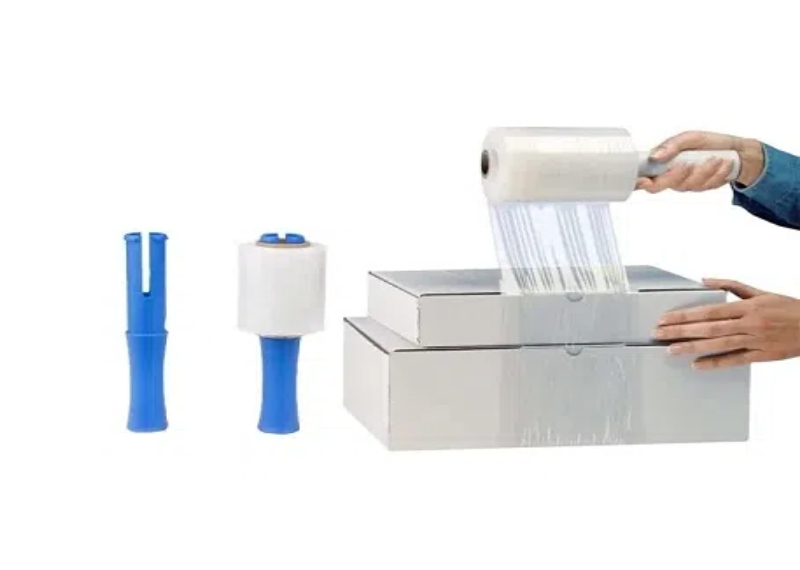
Using moving plastic wrap effectively depends on the type of furniture being protected. Here are some tips for applying it to various surfaces:
By using plastic wrap moving furniture with these techniques, you can ensure your furniture arrives undamaged and ready to be set up in your new space.
While both plastic wrap and stretch wrap are popular choices for moving, they serve slightly different purposes and offer unique benefits:
Moving plastic wrap comes in various sizes and types to suit different needs, from small, easily managed rolls to large, heavy-duty options. Here’s an overview of the common choices:
Using the right type and size of stretch plastic furniture wrap moving ensures that items are protected appropriately, from small and delicate pieces to large and bulky furniture. Each type serves a specific purpose, enabling secure and customized packing solutions for any move.
Large plastic wrap for moving is an essential tool for those looking to secure and protect bigger furniture pieces during transport. Designed with extra width (typically around 15-20 inches) and length, large moving plastic wrap allows users to cover expansive surfaces efficiently. Its wide roll is ideal for wrapping around substantial items such as sofas, dining tables, appliances, and mattresses, providing a seamless protective layer that keeps these pieces stable and free from dust or minor scratches during a move. Additionally, it’s perfect for wrap around pallets, ensuring that your items are securely bundled and ready for safe handling throughout the moving process.
Typical uses for large plastic wrap for moving include:
Using large plastic wrap for moving provides several advantages when it comes to handling and safeguarding bulky items. Key benefits include:
Incorporating large plastic wrap into moving preparations is an excellent way to protect oversized items, ensuring they arrive at their destination in pristine condition.
Heavy duty plastic wrap is specifically designed for challenging moving situations where standard wraps may not provide adequate protection. This type of moving plastic wrap is thicker and more durable, offering enhanced protection for heavy or delicate furniture pieces. Heavy duty plastic wrap for furniture is ideal in situations where items are particularly prone to scratches, scuffs, or impact damage, making it essential for safeguarding high-value or fragile belongings.
Typical scenarios where heavy duty plastic wrap is highly beneficial include:
Selecting the right heavy duty plastic wrap for moving requires understanding the additional benefits it brings in terms of durability and protective qualities. When considering heavy duty options, it’s important to choose a wrap that suits the specific items and requirements of your move. Key factors include:
By choosing heavy duty plastic wrap for moving, you can significantly increase the level of protection for your belongings, making it a reliable choice for both long-distance moves and local relocations.
When deciding between stretch wrap and plastic sheets as part of your moving plastic wrap options, understanding each material’s strengths and purposes can make the choice easier. Both stretch wrap and plastic sheets are useful for specific moving needs, but they have distinct advantages depending on the type of item being wrapped.
Key benefits and considerations include:
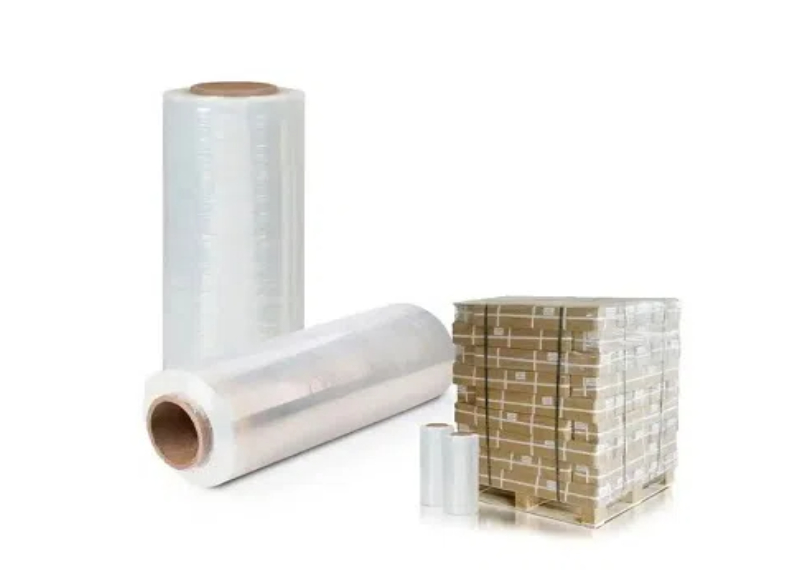
Choosing the right moving plastic wrap roll depends on the items you’re protecting. Each type has a unique purpose, and knowing when to use each can help ensure the safety and cleanliness of your belongings:
By understanding the benefits and best use cases of each type, you can make the most of moving plastic wrap to ensure that every item is protected, organized, and ready for transport.
Using moving plastic wrap effectively ensures that your belongings are securely protected during transit. By applying specific techniques, you can wrap various furniture pieces and appliances with minimal effort and maximum security. Here are some key methods for using moving plastic wrap on different types of items:
Moving plastic wrap is also excellent for bundling smaller items together, keeping them organized and preventing loss or damage. Here are some tips for bundling with moving plastic wrap:
By mastering these moving plastic wrap packaging techniques, you can ensure that all items are efficiently protected and neatly bundled, making both moving and unpacking a streamlined process.
When purchasing wholesale moving plastic wrap, buyers should consider several factors to ensure they are selecting the right product for their moving and storage needs. The quality, size, and type of wrap, as well as the supplier’s reputation, all play important roles in determining the effectiveness and value of the wrap. Below, we will delve into the most crucial aspects to consider when making a purchase, ensuring that buyers make an informed decision.
The quality and strength of the material are key when choosing wholesale moving plastic wrap. Stronger wraps offer better protection and are less likely to tear during the moving process. For example, white plastic wrap, known for its durability, is often used in both commercial and residential settings due to its ability to provide robust protection. The opaque nature of the wrap ensures added security by blocking UV rays and preventing dust accumulation, making it a reliable choice for long-term storage.
When evaluating moving plastic wrap, check the product description for the gauge or thickness of the film. Higher gauges typically indicate stronger, more durable plastic. Look for wraps that are made of high-quality, stretchable material, such as cast or blown polyethylene, which offers superior strength and flexibility.
The size and length of the moving plastic wrap roll are essential in determining how much you’ll need for your move. Wholesale options often provide larger quantities, which are cost-effective for those who have a lot to pack. Ensure that the roll length is sufficient to cover all the furniture, appliances, and smaller items you need to wrap.
For most moves, a 1,000-foot roll is common, but depending on your needs, you may require more or less. Additionally, consider the width of the roll, as a wider wrap can cover larger items faster and with fewer layers. Buyers should carefully estimate their requirements and choose a roll size that best fits their needs to avoid running out of wrap mid-move.
Stretchability is another important factor to consider. Moving plastic wrap should be stretchable enough to conform tightly around furniture and other items without breaking. Stretch film that is too rigid can lead to difficulty in wrapping, while highly stretchable wrap provides a snug fit and excellent protection.
Look for wraps with good stretch properties, typically around 100-150% stretch. This flexibility ensures the wrap stays tight around objects, providing extra support without the risk of ripping or losing its shape during the move.
The ease of use can make a significant difference, especially when wrapping large items or multiple pieces of furniture. Some moving plastic wrap rolls come with built-in handles or dispensers that make it easier to apply the wrap without needing additional tools or assistance. These features reduce hand strain and allow for more efficient wrapping.
Look for products that offer added convenience, such as ergonomic handles or pre-attached dispensers, which make the wrapping process faster and less cumbersome. Buyers should prioritize features that streamline their moving process and reduce the risk of injury or frustration.
If you are storing items for a long period or moving in different weather conditions, it’s crucial to choose moving plastic wrap that offers UV resistance and weather protection. UV-resistant plastic wrap will protect your items from harmful sunlight and prevent the plastic from degrading over time. This is particularly important for long-term storage.
For moves involving exposure to rain, humidity, or varying temperatures, choose a wrap designed to provide moisture and UV protection. This ensures that your belongings are safeguarded from environmental damage, such as fading, cracking, or rust.
Wholesale moving plastic wrap is generally sold in bulk, which offers substantial savings. However, it’s important to balance price with quality to ensure that you’re getting a good deal. Low-cost wraps may be tempting, but they may lack the durability and stretchability needed for a successful move.
Buyers should research suppliers, reading reviews and checking ratings to gauge the reliability of the manufacturer. Opt for reputable suppliers who offer competitive pricing without sacrificing quality. Ensure that the wrap you purchase is suitable for the level of protection you require.
In today’s environmentally-conscious world, the sustainability of the materials used in moving plastic wrap is an important consideration. Look for plastic wrap made from recyclable or biodegradable materials. Some brands offer eco-friendly options that minimize environmental impact while still providing the necessary protection for your items.
By choosing sustainable moving plastic wrap, you can reduce your carbon footprint and ensure that your moving process is both efficient and environmentally responsible.
When purchasing wholesale moving plastic wrap, it is crucial to consider material quality, roll size, stretchability, ease of use, UV resistance, price, and environmental factors. By evaluating these aspects carefully, buyers can select the right wrap that meets their moving and storage needs, ensuring the safety of their items and making the process as smooth as possible.
Moving plastic wrap is an essential tool for packing and protecting furniture during a move. It provides a secure layer that keeps furniture pieces intact, shields them from dust and moisture, and prevents scratches or minor damages. Proper usage can maximize its protective function and ensure a smooth moving process. This guide covers the specific steps for using moving plastic wrap and the necessary precautions to enhance its effectiveness.
Before applying moving plastic wrap, proper preparation ensures better adhesion and protection. This step helps prevent potential damage and makes the wrapping process more efficient.
Proper wrapping techniques ensure that furniture stays secure throughout the moving process. Following a structured method prevents excessive material use while optimizing protection.
To fully leverage the protective benefits of moving plastic wrap, certain precautions should be taken to prevent mishaps and damage.
Once the furniture arrives at its destination, removing the wrap properly ensures that no damage occurs during the unpacking process.
Moving plastic wrap is an effective tool for protecting furniture during a move, but proper application and precautions are essential to maximize its benefits. From preparing and wrapping furniture correctly to taking necessary safety measures and ensuring careful unwrapping, following these guidelines ensures a smooth and damage-free moving experience.
When using moving plastic wrap for packing and moving, incorporating additional accessories or products can significantly enhance its effectiveness in protecting household items. These complementary products offer extra cushioning, stability, and protection, ensuring that your belongings are safe during the moving process. Below are various products and accessories that, when used together with moving plastic wrap, can help safeguard your items, reduce damage, and make your move more organized and efficient.
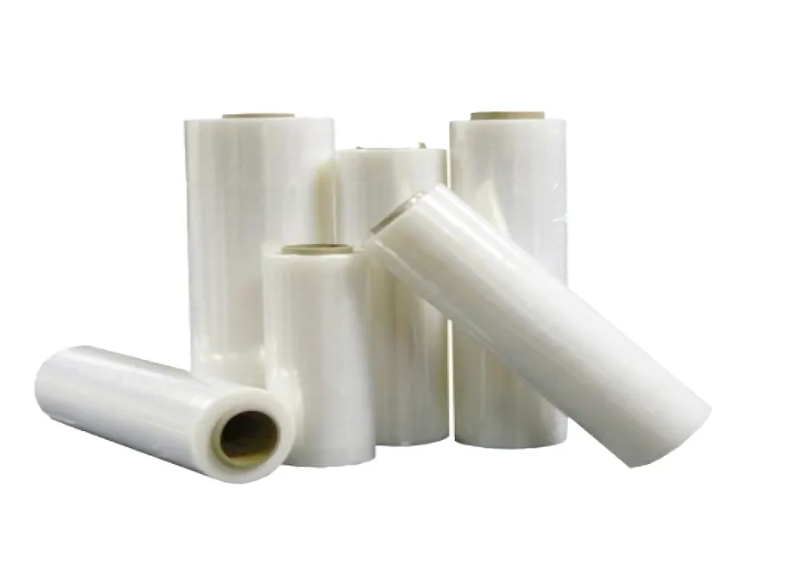
Moving blankets and pads are essential accessories that can be used alongside moving plastic wrap for added protection. They provide extra cushioning for fragile or delicate furniture, such as sofas, dressers, and electronics. The soft, padded material helps prevent scratches, dents, and other physical damage, especially during the handling and transportation stages.
By wrapping furniture in moving blankets first and then securing them with moving plastic wrap, you create a double layer of protection. This method ensures that your items are cushioned against impacts and also shielded from dirt, dust, and moisture. Moving blankets are particularly beneficial for high-value or antique furniture that requires extra care.
Bubble wrap is a great addition to moving plastic wrap when you need to protect fragile items like glassware, electronics, and artwork. While moving plastic wrap offers a secure and protective outer layer, bubble wrap provides shock-absorbing cushioning for sensitive objects. The small air-filled bubbles help to disperse pressure and absorb impacts, preventing damage during transport.
To use bubble wrap effectively, wrap the fragile item first with bubble wrap, then secure it with moving plastic wrap. This layering ensures that both the cushion and outer protection are in place, offering double the protection for valuable or fragile items.
For furniture or other large items with sharp edges, foam corner protectors are a must-have accessory. These protectors fit over the corners of furniture like tables, dressers, and bookshelves, preventing damage to both the furniture and other items in the moving truck. Foam corner protectors absorb impact from bumps and scratches, safeguarding your items from unintended collisions.
Once the foam corner protectors are in place, secure the entire piece with moving plastic wrap. This combination provides robust protection for vulnerable corners, reducing the risk of damage during the move.
When using moving plastic wrap, having proper control and ease of use is essential. Stretch film handles are tools designed to make the application of plastic wrap faster and easier. These handles fit securely onto the ends of the roll and allow you to apply the wrap with more precision and less physical strain.
Using stretch film handles not only speeds up the wrapping process but also ensures that the wrap is applied evenly and tightly. This minimizes the risk of the plastic wrap shifting or loosening, providing better protection for your items.
Packing peanuts or foam inserts are lightweight, cushioning materials that are often used inside boxes to prevent items from shifting during transit. When used in combination with moving plastic wrap, they can enhance protection by filling the voids inside boxes or wrapping fragile items. These materials help to stabilize the contents of a box, reducing the chance of breakage caused by movement or jostling during the move.
When packing delicate items such as electronics or china, consider adding packing peanuts or foam inserts inside the box and wrapping the box itself in moving plastic wrap for additional protection against impacts.
Plastic moving boxes are a durable and reusable alternative to traditional cardboard boxes. These sturdy containers offer superior protection, especially for items that are sensitive to moisture, dust, or handling damage. When paired with moving plastic wrap, plastic moving boxes help secure fragile or valuable items while also protecting them from environmental factors.
Plastic boxes with secure lids can be wrapped with moving plastic wrap to further prevent them from opening during transport. This combination ensures that your belongings are well-protected and organized, reducing the likelihood of damage or loss.
Furniture sliders are accessories that help move heavy furniture more easily without damaging the floors or the furniture itself. They can be used before or after wrapping items in moving plastic wrap to help with loading and unloading. Placing furniture sliders under heavy pieces of furniture allows you to slide them smoothly across floors, preventing scratches and reducing strain during the move.
While moving plastic wrap secures and protects the furniture, furniture sliders enable easier maneuverability, making the entire moving process more efficient and safe for both the furniture and the flooring.
While moving plastic wrap provides an outer layer of security, tape and labels are crucial for sealing boxes and marking important items. Packing tape is used to secure the ends of the plastic wrap and to ensure that it stays in place during transit. Additionally, labels allow you to identify boxes and furniture quickly, reducing the chances of misplacing or damaging items in the chaos of a move.
Labeling items wrapped in moving plastic wrap also helps ensure that fragile or high-priority items are handled with care. Clear, visible labels can indicate the contents or whether the item is fragile, making it easier for movers to prioritize and protect your belongings.
By incorporating these accessories and products with moving plastic wrap, you can significantly enhance the protection and security of your household items during a move. From adding cushioning with bubble wrap and moving blankets to providing extra stability with furniture sliders and foam protectors, these products work together to safeguard your belongings and make your move smoother and more efficient.
Moving plastic wrap is a widely used material for protecting furniture and securing items during a move. However, several alternative products can serve similar functions, each with its own advantages and disadvantages. These alternatives include moving blankets, bubble wrap, packing paper, furniture pads, and reusable stretch wraps. Understanding their features, benefits, and drawbacks can help in selecting the best option based on the specific moving needs.
Moving blankets are thick, padded covers designed to shield furniture and other large items from damage. They are a strong alternative to moving plastic wrap, especially for protecting delicate surfaces.
Advantages:
Disadvantages:
Bubble wrap consists of air-filled pockets that absorb shock, making it an excellent choice for fragile and breakable items. While it serves a different purpose than moving plastic wrap, it can be used in combination with other packing materials.
Advantages:
Disadvantages:
Packing paper is a flexible and affordable alternative for wrapping individual items and filling gaps in boxes. While it does not provide the same level of protection as plastic wrap, it is useful for specific packing needs.
Advantages:
Disadvantages:
Furniture pads are similar to moving blankets but are usually thinner and more lightweight. They are designed to protect furniture surfaces from scratches and minor dings.
Advantages:
Disadvantages:
Reusable stretch wraps are made of fabric or flexible materials that mimic the function of plastic wrap but are designed for multiple uses. These alternatives are gaining popularity for eco-conscious moving practices.
Advantages:
Disadvantages:
While moving plastic wrap is a convenient and effective packing material, various alternatives offer unique benefits. Moving blankets and furniture pads provide superior impact protection, bubble wrap excels in cushioning fragile items, packing paper is an eco-friendly option for small objects, and reusable stretch wraps offer a sustainable choice. Understanding the advantages and disadvantages of each alternative allows for better decision-making based on specific moving needs, ensuring that furniture and belongings remain safe throughout the relocation process.
While regular plastic wrap, like the kind used in kitchens, can technically be used for moving, it isn’t the most effective choice. Kitchen plastic wrap is typically thinner and not designed to cling strongly to itself over large surfaces, making it less effective at holding items securely. Moving plastic wrap, on the other hand, is thicker and more durable, designed specifically for handling the demands of moving. It clings tightly to itself without using adhesives, making it easy to wrap around furniture, appliances, and even bundles of smaller items, like utensils or tools.
Regular plastic wrap also doesn’t provide the same level of protection. It may be suitable for lightweight or small items but often lacks the durability needed for large furniture or heavy items. For the best results and secure protection, moving plastic wrap is recommended, as it’s designed to handle furniture, provide a tight seal, and resist tearing. In summary, while regular plastic wrap might work in a pinch, investing in moving plastic wrap provides better security and peace of mind.
Movers wrap furniture in plastic for several important reasons that ensure items stay safe and intact during transport. First, moving plastic wrap prevents scratches, scuffs, and minor impacts by creating a protective barrier around each piece of furniture. This is especially useful for delicate or wooden items that might otherwise get damaged in transit. Additionally, moving plastic wrap helps to keep drawers, cabinet doors, and other movable parts securely closed, preventing them from opening or shifting, which could lead to scratches or breakage.
Another advantage is that moving plastic wrap keeps furniture clean and free from dust, dirt, and moisture exposure. This is especially helpful during long moves, where items might be stored in trucks or warehouses. The self-cling property of moving plastic wrap also makes it easy to apply and remove without leaving adhesive residue behind, unlike tape, which can damage furniture surfaces. Overall, movers use plastic wrap because it’s an efficient, low-cost solution that protects furniture while simplifying the moving process.
Moving plastic wrap, such as shrink wrap or cling film, generally isn’t recyclable through regular curbside recycling. This is because it’s made from low-density polyethylene (LDPE), which is often too thin and contaminated with debris like dust, oil, or food particles, making it difficult to process. However, some recycling centers accept LDPE plastic films for recycling, though you should check with your local facility for specific guidelines. For a more eco-friendly approach, you can reuse the wrap if it’s still in good condition, or you could explore other sustainable packaging alternatives, such as biodegradable wraps or reusable moving blankets, to reduce your carbon footprint.
Yes, cling film (also called plastic wrap) can be an effective way to prevent rugs from shifting or bunching during a move. By wrapping the rug tightly in plastic wrap, you hold it in place and keep it from sliding or tangling, especially in a moving truck. It helps to protect the rug from dirt and moisture as well. However, for more fragile or delicate rugs, it’s a good idea to use protective covers designed for rug transport or wrap them in moving blankets in addition to using cling film for added safety.
When used properly, shrink wrap does not damage furniture. It provides a protective layer that holds items together and shields them from dirt, moisture, and scratches. However, it’s important to avoid wrapping the furniture too tightly. If the shrink wrap is applied with excessive force, it can leave marks on certain materials like wood or upholstery, especially if the wrap is left on for too long. To prevent any damage, consider using moving blankets or protective pads underneath the shrink wrap. This adds an extra layer of cushioning while keeping your furniture secure.
When wrapping fragile items for a move, the key is to cushion and protect them from impacts and rough handling. Start by wrapping each item individually in bubble wrap or foam padding. For extra protection, place fragile items in sturdy boxes filled with packing peanuts or crumpled paper to prevent shifting. Fragile items like glass or ceramics should be wrapped tightly, with all edges protected. Secure the wrap with tape, but avoid over-taping, as it can make unpacking difficult. Label boxes clearly as “fragile” to ensure movers handle them with care.
When wrapping furniture for a long-distance move, use a combination of shrink wrap, moving blankets, and packing materials to provide maximum protection. First, disassemble larger pieces of furniture (if possible) to reduce the risk of damage. Then, wrap each item in moving blankets for cushioning, followed by shrink wrapping to secure the blanket and protect against dirt and moisture. Be sure to pad corners and edges with extra materials like bubble wrap or foam to absorb impacts. If you’re worried about exposure to moisture, consider using a plastic wrap that’s more resistant to water.
The amount of shrink wrap you’ll need depends on how much furniture and belongings you’re moving. As a general rule, a 1000-foot roll of shrink wrap is suitable for a small to medium-sized move. For large furniture like sofas, mattresses, and appliances, you may need additional rolls to ensure proper coverage. If you’re wrapping multiple pieces, it’s a good idea to purchase extra shrink wrap to avoid running out. Keep in mind that you might need more than one layer for particularly valuable or fragile items to ensure protection during the move.
Cling wrap, or plastic wrap, is useful for securing furniture, keeping smaller items together, and preventing items from shifting during a move. To use cling wrap, start by tightly wrapping the item from one side to the other, ensuring that it’s securely bound. For furniture, wrap pieces like chairs, tables, or couches to keep parts together and protect them from scratches or dirt. You can also use it for bundling smaller items, such as picture frames or electronics. However, avoid wrapping too tightly, especially for delicate or fragile items, as it can cause damage.
Yes, furniture should definitely be wrapped for moving to protect it from scratches, dust, and damage during transit. Wrapping furniture with moving blankets or shrink wrap helps keep the surfaces intact and shields delicate finishes. For long-distance moves, this extra layer of protection is even more important. Wrapping large pieces such as sofas, dressers, and tables can also prevent them from shifting and getting damaged in the moving truck. Additionally, wrapping protects your furniture from dirt, moisture, and other external factors during the journey.
When choosing shrink wrap for moving, it’s important to consider the thickness or gauge of the material. Typically, a 60 to 80 gauge shrink wrap is ideal for furniture and large items, providing enough strength to secure and protect them during the move. For smaller or lighter items, a lower gauge (50 to 60) can suffice, as it is more flexible and easier to handle. On the other hand, heavy-duty items may require a thicker, more durable gauge (90 or higher). Choose the appropriate gauge based on the weight and fragility of the items you’re moving.
Shrink wrap is used in moving primarily to secure and protect furniture, appliances, and other large items during transport. It’s a versatile, transparent film that shrinks tightly around objects when heat is applied. This provides a snug, protective layer that keeps items safe from dust, dirt, moisture, and damage caused by friction or impact. It can also be used to bundle smaller items together, keeping them organized and easier to move. Shrink wrap prevents furniture pieces from shifting and falling apart, making it an essential tool for safe and efficient moving.
The best packing material for moving depends on the type of items you’re packing. For fragile items, bubble wrap is a top choice, as it offers cushioning and protection from shocks. Packing peanuts and foam inserts are great for filling empty spaces in boxes, ensuring your items stay in place. For furniture and larger items, moving blankets provide excellent protection against scratches and dings. For securing items or bundling, shrink wrap is a popular option. Also, heavy-duty cardboard boxes with reinforcements ensure that everything stays safe during transit.
The most efficient way to pack for a move involves a few key steps: Start early, gather quality packing materials, and pack systematically. Begin by sorting through your belongings and getting rid of things you no longer need. Then, pack room by room, starting with the least-used items. Use durable boxes, packing paper, bubble wrap, and shrink wrap for large furniture. Label all boxes with their contents and the room they belong to. Keep an inventory list, and make sure heavy items go in smaller boxes to prevent strain. Lastly, create a moving day plan to ensure a smooth process.
People traditionally wrapped couches in plastic to protect the fabric and structure from dust, dirt, moisture, and damage during a move. Plastic wrapping keeps the couch clean, prevents spills from soaking into the fabric, and helps avoid scratches or scuffs. It also secures removable cushions or parts, ensuring that the couch remains intact during transport. The plastic acts as a protective barrier against any environmental conditions that could affect the couch’s material, ensuring it arrives at the destination in good condition.
Movers strap large pieces of furniture to prevent them from shifting or tipping over during the move. Strapping ensures that bulky items like couches, dressers, and refrigerators remain securely in place, reducing the risk of damage to the furniture or other belongings in the moving truck. The straps help distribute the weight evenly and keep everything stable, even during bumpy rides. By securing furniture tightly, movers can also prevent the items from scratching or colliding with one another, making the moving process safer and more efficient.

My name is James Thompson, and I’m the editor of this website dedicated to Stretch Film, Pallet Wrap, and Stretch Wrap products.
My passion for packaging began when I noticed the challenges companies face in securing their products efficiently for transportation and storage. This inspired me to delve deep into the world of stretch films and pallet wraps, exploring the latest technologies and best practices.
I aim to provide valuable insights, practical tips, and up-to-date industry trends to assist you in making informed decisions. Whether you’re a small business owner or part of a large corporation, my goal is to support you in optimizing your operations and ensuring your products reach their destination safely.
Thank you for visiting, and I look forward to accompanying you on your journey toward better packaging solutions.
Comments are closed